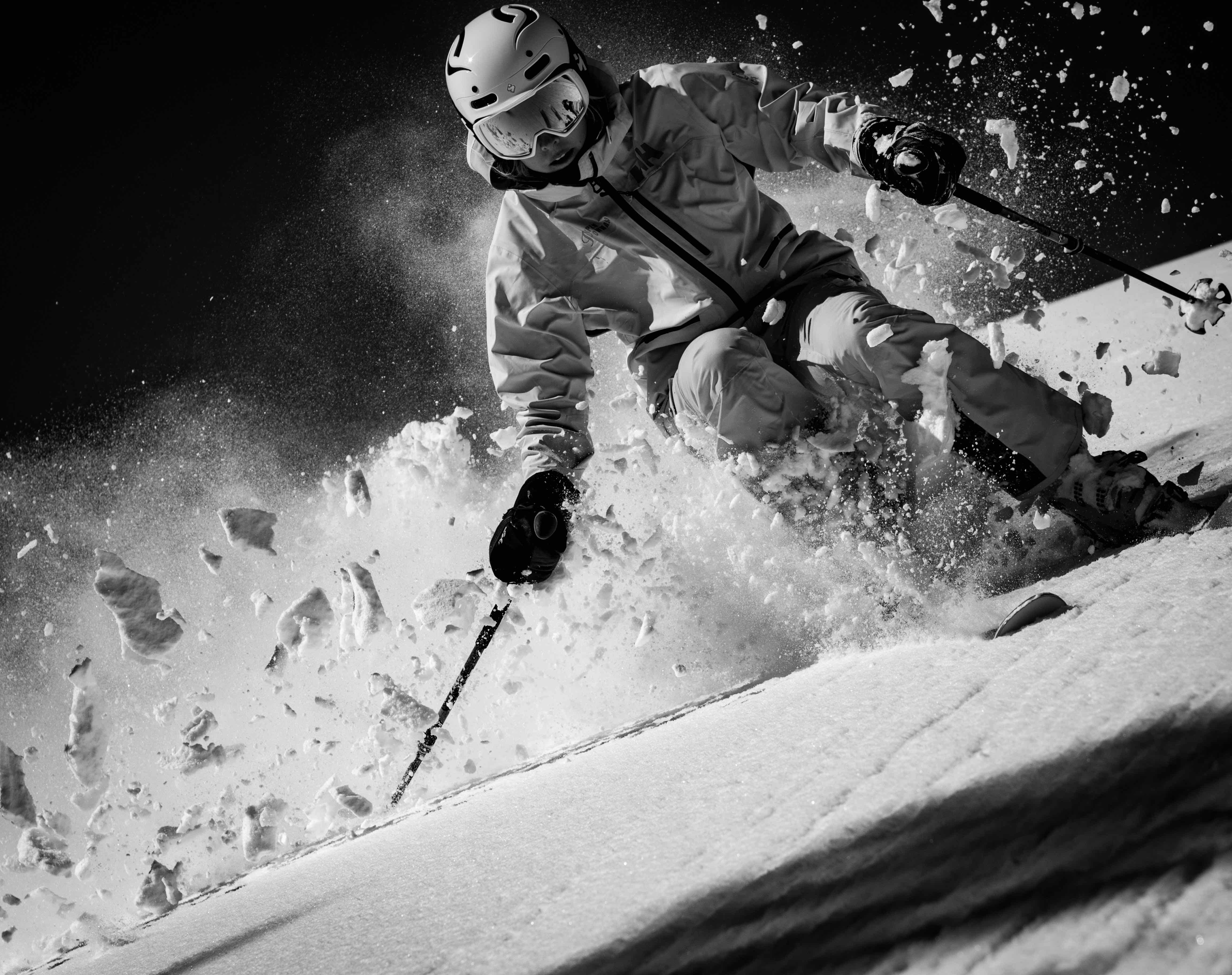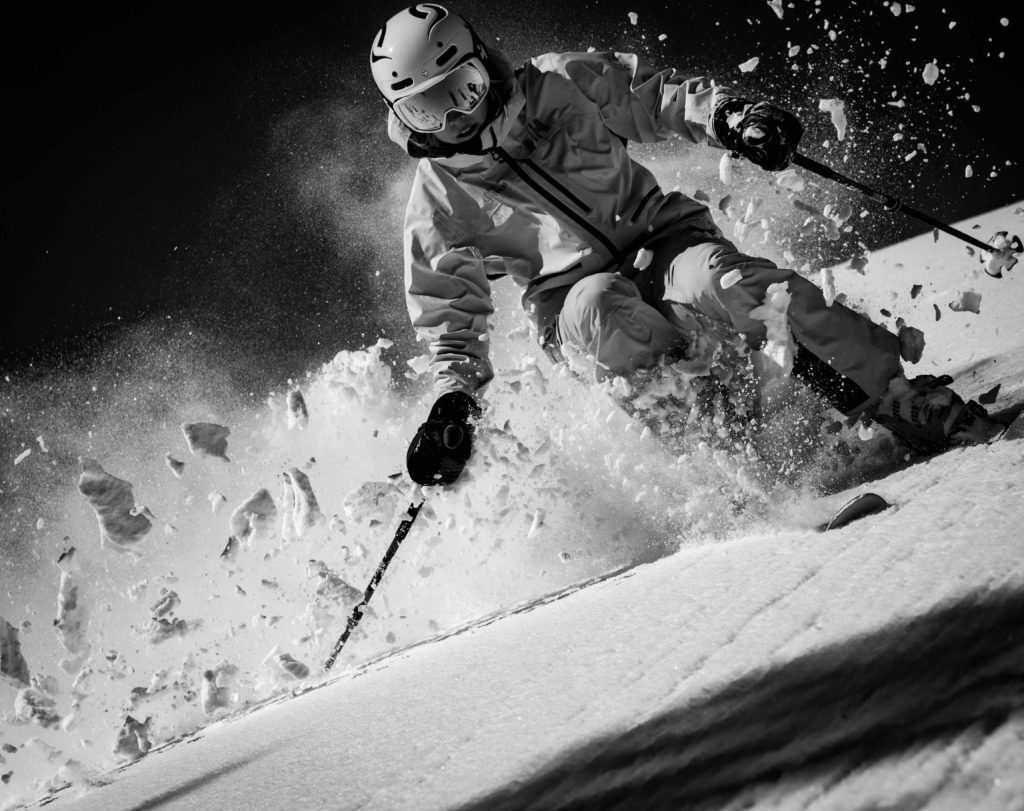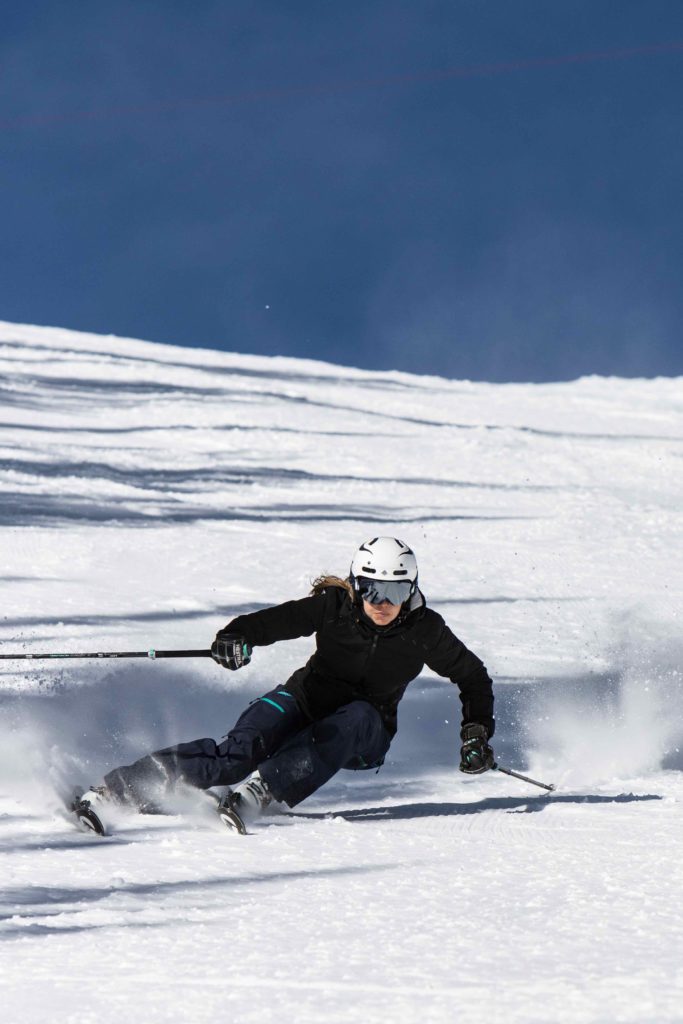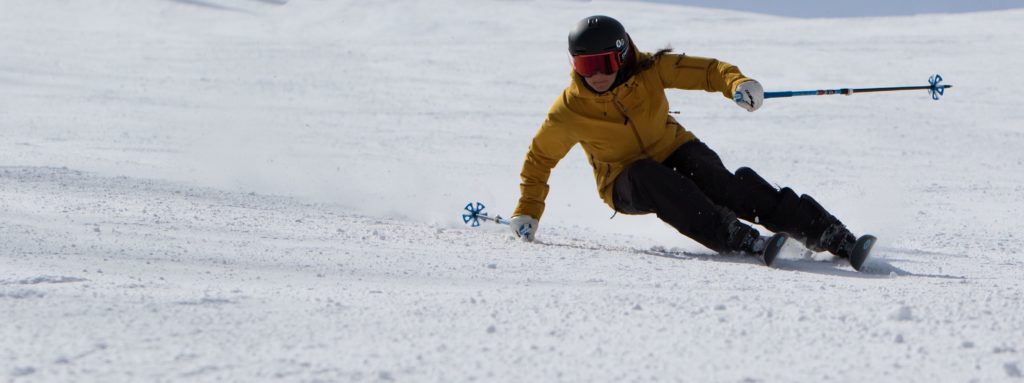Much as I loathe the idea of contributing to the demise of my native tongue, I hereby bow before the Zeitgeist of brevity. For those whose reading habits consist of a diet of small doses, behold the conclusions of my two-part examination of the current women’s ski market, delivered in the modern idiom of the bullet-point list:
- The wider the ski, the fewer the distinctions between a men’s model a women’s model.
- The women’s models that are the least like any in the corresponding men’s collection tend to be the products of extensive field testing.
- In the U.S., the Women’s All-Mountain East category dominates sales. In Europe, Women’s Technical skis continue to be important.
- While there are athlete-specific skis made for elite female racers, there is no such thing as a made-for-women race ski.
- The world market for women’s skis over 100mm wide at the waist isn’t big enough to support the cost of women-specific tooling.
- The best women’s skis for hard snow fall in the Technical genre (64mm-74mm waist); most Women’s Frontside skis are second and third tier models in the same series and therefore less suited to the strong skier.
All listicle lovers, thanks for your time and have a nice day. Any and all others who wouldn’t mind a bit more insight into the state of the women’s ski market, please allow me to elucidate.
The epitome of power and grace. Photo courtesy of Blizzard.
Of Width and Women
One of the design objectives of almost any made-for-women ski is to trim away any excess fat so that it’s lighter. Because women are, as a rule, lighter than men, the women-specific ski aims to be softer flexing, so it will take less pressure to bow. These twin targets are also on the list of design criteria for any Big Mountain or Powder ski; any ski wide enough to float on top of two feet of powder would weigh a ton if it weren’t modified to compensate for all the extra material required to make it that fat. Same deal with flex: if you turn a long, wide ski into a rail, it becomes extremely unforgiving.
In other words, the wider the ski, the less difference there’s likely to be between the unisex model and any made-for-women model that mirrors it. Because the design criteria for a men’s and women’s fat ski converge, the widest women’s skis tend to be identical to their parallel men’s models.
This may seem like a lazy rationalization, but in most cases it’s the only sensible solution as the market for women’s skis over 100mm underfoot is petite in size. To make separate tooling for women’s models simply doesn’t pencil.
Case in point: several years ago, Head took the unusual tack of introducing an entire line of women’s skis with zero reference to any men’s model. The Joy collection covered the full spectrum of waist widths, including the 98mm Great Joy and the 110mm Big Joy. In my opinion, the widest Joys were also the best and they were inarguably the only skis in their respective genres made from scratch for women.
Fast forward to today, and the Big Joy and Great Joy are no more. Despite heaps of critical hosannas, the Big Joy took more than a year to liquidate its first production run and the Great Joy never caught the sales wave it deserved. No other brand has made so highly specialized a women’s fat ski since.
Work, work, work. A Women-2-Women tester takes a test spin for Blizzard.
Field Testing Drives Adaptations
While women’s and men’s skis made for soft snow tend to be similar when not the same, the opposite is true of skis made for hard snow. Setting the gender-neutral Non-FIS Race genre aside, the two hard snow categories are Technical (waist 67mm-74mm) and Frontside (75mm-84mm). Most brands treat these genres as a unified family, with the narrowest Technical model as the flagship and the wider skis as step-down models to match different ability levels and price points. Remember, the Frontside category is where virtually all skiers begin, so it has the most rungs on the pricing ladder.
The Technical and Frontside categories are where ski makers devote the most time, money and ingenuity to making truly womanized models. The most highly specialized women’s line is the Head Joy collection, as since its inception it has never derived its construction, shape or tooling from a unisex template. Völkl uses an armada of woman testers to empirically define each of its Flair models’ sidecut and binding position. The bindings aren’t moved forward relative to a unisex position as both the shape and mounting point are created together.
A similar protocol links the R&D department at Elan – directed by the only female product design chief in the ski world, Melanja Korošec – with an extensive field testing arm, called W Studio, that’s been part of the R&D process for sixteen years. Elan’s new Wingman series grew out of a design feature – carbon rods embedded in channels in the core – originally created for a women’s ski.
The most successful women’s ski of all time, Blizzard’s Black Pearl 88, accelerated its sales when it adopted a women-specific construction that was field tested by a squad assembled to provide feedback on all women’s products. Called Women 2 Women, this international panel is now under the direction of Leslie Baker-Brown, who was instrumental in integrating W2W feedback into the R&D process. The stupendous sales of the Black Pearl and its spin-off models have inspired all major suppliers to focus more resources on their women’s collections.
The top selling model at Atomic is also a women’s ski, the Cloud 9. As Atomic is world’s number one brand, the Cloud 9 is, in all probability, the best selling ski in the world. Like all Cloud models – indeed, all Atomic women’s system skis – the Cloud 9 was built from scratch for women and extensively field tested to fine tune and validate the selection of materials, construction, sidecut and skier position. For system skis, ramp angle built into the binding interface is also a testable factor.
At the other end of the sales volume spectrum, Liberty’s designer, Dan Chalfant, modifies the sidecut of his women’s models in all their shorter lengths, reducing the ski’s degree of tail flare to give the lighter skier more control over turn shape. The process of optimizing the performance of shorter skis may include a slight adjustment in binding position, but this is related more to the change in length than change in the skier’s gender. All Liberty women’s skis swap out poplar for Paulownia in the core, but otherwise borrow a unisex chassis. “You don’t need a totally different ski for a women if you start with a good ski to begin with,” Chalfant says.
Perhaps the best known women’s test team is K2’s Alliance, which has been doing the detail work on K2’s women’s models for over two decades. K2 was one of the first brands to recognize the importance of the women’s market and invest in women’s models in all categories.
Perennial industry powerhouse Rossignol also deploys a cadre of female testers to dial in its women’s models. Their contributions to Rossi’s current collection include an extra damping element in the tip of its new Nova series. Salomon, Nordica and Atomic also include field testing as an intrinsic part of their product development feedback loop.
Victorians admired a finely turned ankle. Realskiers swoons over this lass’s finely turned angles. Photo courtesy of Blizzard.
All-Mountain East: Where the Action is
When one looks at the U.S. women’s ski market as a whole, it’s easy to see why so much sales activity is concentrated in the All-Mountain East (85mm – 94mm) genre. There’s no such thing as a women’s Non-FIS Race model, so you can scratch them off the list of options. Technical skis, while still a vital category in Europe, are all but invisible here. Frontside skis are mostly intermediate models that advancing women want to advance beyond. All-Mountain West models are wide enough to serve as a second pair of off-trail skis but too wide for most women to serve as an everyday ski. Big Mountain models only sell in big snow years and film stars and heli services use more women’s Powder models than are sold to the paying public.
The category I elided over – All-Mountain East – is where the majority of female buyers are funneled. They’re wide enough to float a light skier in soft snow, yet just narrow enough to be easy to tilt on edge. A woman’s more vulnerable knees won’t automatically feel the negative effects of ground reaction force on hard snow, which encourages their technical development.
The story behind a recent addition to the ranks of Women’s All-Mountain East models, Völkl’s Secret, illustrates the underpinnings of the category’s dominance. Völkl recognized that the design of its new M5 Mantra represented a unique opportunity to optimize its women-specific counterpart. Of course Völkl could have simply made the 95mm-waisted M5 in women’s sizes, as it does elsewhere in the WAME genre with the Kenja. But extensive testing revealed that a 92mm waist delivered tangibly better versatility for the target skier, so the Secret was made on this narrower chassis.
So why isn’t the Kenja narrower than the Kendo, I hear my most insightful readers cry? Because as a ski’s silhouette shrinks, so does the need to make it narrower still to suit a female pilot. Völkl’s history with the Kenja and Secret 92 suggests that the boundary between “too wide” and “just right” for women lies somewhere near the top end of the All-Mountain East genre.
At the end of the day, building skis is a business and no brand has the financial incentive to create specialized constructions and tooling for every women’s model they make. Economic efficiency is an unavoidable requirement that enforces some constraints on design. Simply put, to create every women’s ski from scratch entails costs that are too high to serve a demand that is too low.
Now that you have a big-picture view of the women’s ski market, you’re better equipped to embark on next week’s deep dive into the details. We’ll look at the specs of 91 women’s models to see what they reveal about the present and future of the women’s market.



